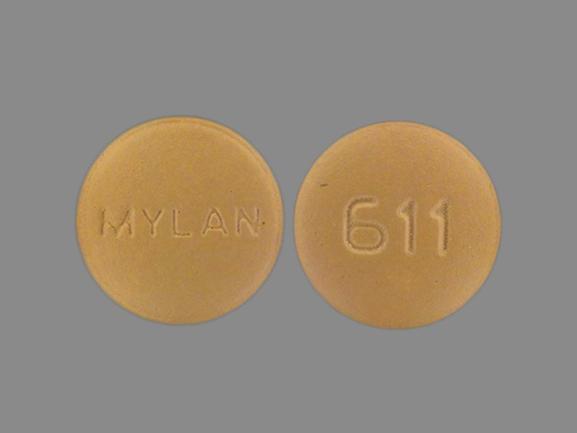Methyldopa Disease Interactions
There are 8 disease interactions with methyldopa.
- Liver disease
- Cerebrovascular disease
- Dialysis
- Hemolytic anemia
- Leukopenia
- Peripheral edema
- Pheochromocytoma
- Psychoses
Methyldopa (applies to methyldopa) liver disease
Major Potential Hazard, High plausibility.
The use of methyldopa is contraindicated in patients with active liver disease, such as active hepatitis or active cirrhosis, and in patients with previous methyldopa- associated liver disorders. Hepatotoxicity is an uncommon but toxic effect of methyldopa. Therapy with methyldopa should be administered cautiously in patients with a history of or predisposition to liver disease.
Methyldopa (applies to methyldopa) cerebrovascular disease
Moderate Potential Hazard, Moderate plausibility. Applicable conditions: History - Cerebrovascular Disease
Rarely, involuntary choreoathetotic movements have been observed during therapy with methyldopa in patients with severe bilateral cerebrovascular disease. If these movements occur, therapy should be stopped.
Methyldopa (applies to methyldopa) dialysis
Moderate Potential Hazard, Moderate plausibility. Applicable conditions: hemodialysis
Methyldopa is removed by dialysis. Patients receiving methyldopa and undergoing dialysis may occasionally become hypertensive.
Methyldopa (applies to methyldopa) hemolytic anemia
Moderate Potential Hazard, Low plausibility. Applicable conditions: Bleeding
Hemolytic anemia has occurred rarely during therapy with methyldopa and may be associated with a (+) direct Coombs. Therapy with methyldopa should be administered cautiously to patients with anemia or a predisposition to hemolytic syndromes. Clinical monitoring of hematopoietic function, including a baseline hematological profile, is recommended. If Coombs- positive hemolytic anemia occurs, the cause may be methyldopa and the drug should be discontinued
Methyldopa (applies to methyldopa) leukopenia
Moderate Potential Hazard, Low plausibility. Applicable conditions: Neutropenia
Rare reports of reversible reduction in white blood cell count, primarily neutrophils, have been noted. White blood cell counts returned to normal with discontinuation of methyldopa. Therapy with methyldopa should be administered cautiously in patients with a history of or predisposition to decreased white blood cell or neutrophil counts. Clinical monitoring of hematopoietic function is recommended.
Methyldopa (applies to methyldopa) peripheral edema
Moderate Potential Hazard, Moderate plausibility. Applicable conditions: Congestive Heart Failure, Fluid Retention
Methyldopa may cause edema or weight gain associated with sodium retention. Therapy with methyldopa should be administered cautiously in patients adversely affected by sodium and water retention.
Methyldopa (applies to methyldopa) pheochromocytoma
Moderate Potential Hazard, Moderate plausibility.
Methyldopa causes fluorescence in urine samples at the same wave lengths as catecholamines, falsely high levels of urinary catecholamines may be reported. This will interfere with the diagnosis of pheochromocytoma. It is important to recognize this phenomenon before a patient with a possible pheochromocytoma is subjected to surgery. Methyldopa is not recommended for the treatment of patients with pheochromocytoma.
Methyldopa (applies to methyldopa) psychoses
Minor Potential Hazard, Low plausibility. Applicable conditions: Psychosis
Rare symptoms of psychoses, such as hallucinations and delirium, and vivid dreams and nightmares have been reported during methyldopa therapy. Therapy with methyldopa should be administered cautiously to patients with a history of or predisposition to these conditions.
Switch to professional interaction data
Methyldopa drug interactions
There are 315 drug interactions with methyldopa.
Methyldopa alcohol/food interactions
There are 2 alcohol/food interactions with methyldopa.
More about methyldopa
- methyldopa consumer information
- Check interactions
- Compare alternatives
- Pricing & coupons
- Reviews (13)
- Drug images
- Side effects
- Dosage information
- During pregnancy
- Drug class: antiadrenergic agents, centrally acting
- Breastfeeding
- En español
Related treatment guides
Drug Interaction Classification
| Highly clinically significant. Avoid combinations; the risk of the interaction outweighs the benefit. | |
| Moderately clinically significant. Usually avoid combinations; use it only under special circumstances. | |
| Minimally clinically significant. Minimize risk; assess risk and consider an alternative drug, take steps to circumvent the interaction risk and/or institute a monitoring plan. | |
| No interaction information available. |
See also:
Further information
Always consult your healthcare provider to ensure the information displayed on this page applies to your personal circumstances.


